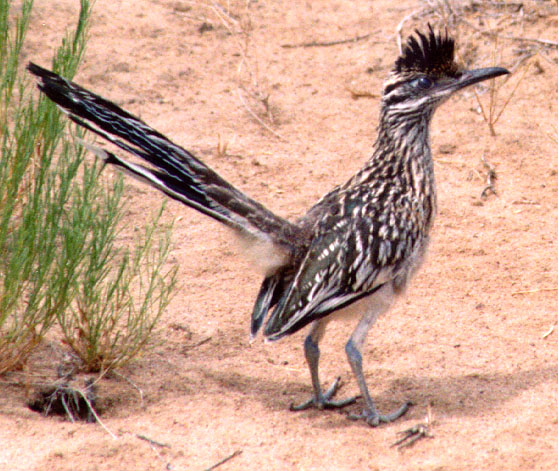
To avoid flying, the desert roadrunner runs! Up to 17 miles an hour! Oh, sure if it is scared, or going downhill, it can fly. Yet it prefers to travel by foot. It keeps cool as many other creatures of the desert do, by limiting travel during the heat of the day. And it gets hungry--mostly for snakes,(capturing rattlesnakes by wrapping its cape-like wings around it) lizards and insects. And it shares, the male offering tidbits of a tasty find with a female friend.
Yes, the roadrunner, at rest beside a creosote bush, with a call similar to a dove, is a reminder that creatures in the hostile desert environment populate the landscape by virtue of keeping the "road to itself."
Sure it is prey to hawks raccoons and cats, but the roadrunner avoids the thing it should do, fly, and avoids its predators by running. In other words, what is expected isn't always the answer. The unexpected, such as running instead of flying, is a preference and one that works for the roadrunner. Consequently it stands out as its main feature.
There were men who left the job on the dam to do something else, hitching a ride on a train car heading west, north, east or south, perhaps for a better job, or maybe even just to be near family or to try something else.
However, the men were expected to stay, since the pay was regular and the food was decent and it was a matter of principle to get the job done along with the others. Yet it wasn't enough to get some men to "fly" like the others. Thus names were given, such as drifter and grifter, describing their unexpected behavior. When really, for the individual, name or no name, it was just as adaptive to run as it was to fly with the others.



